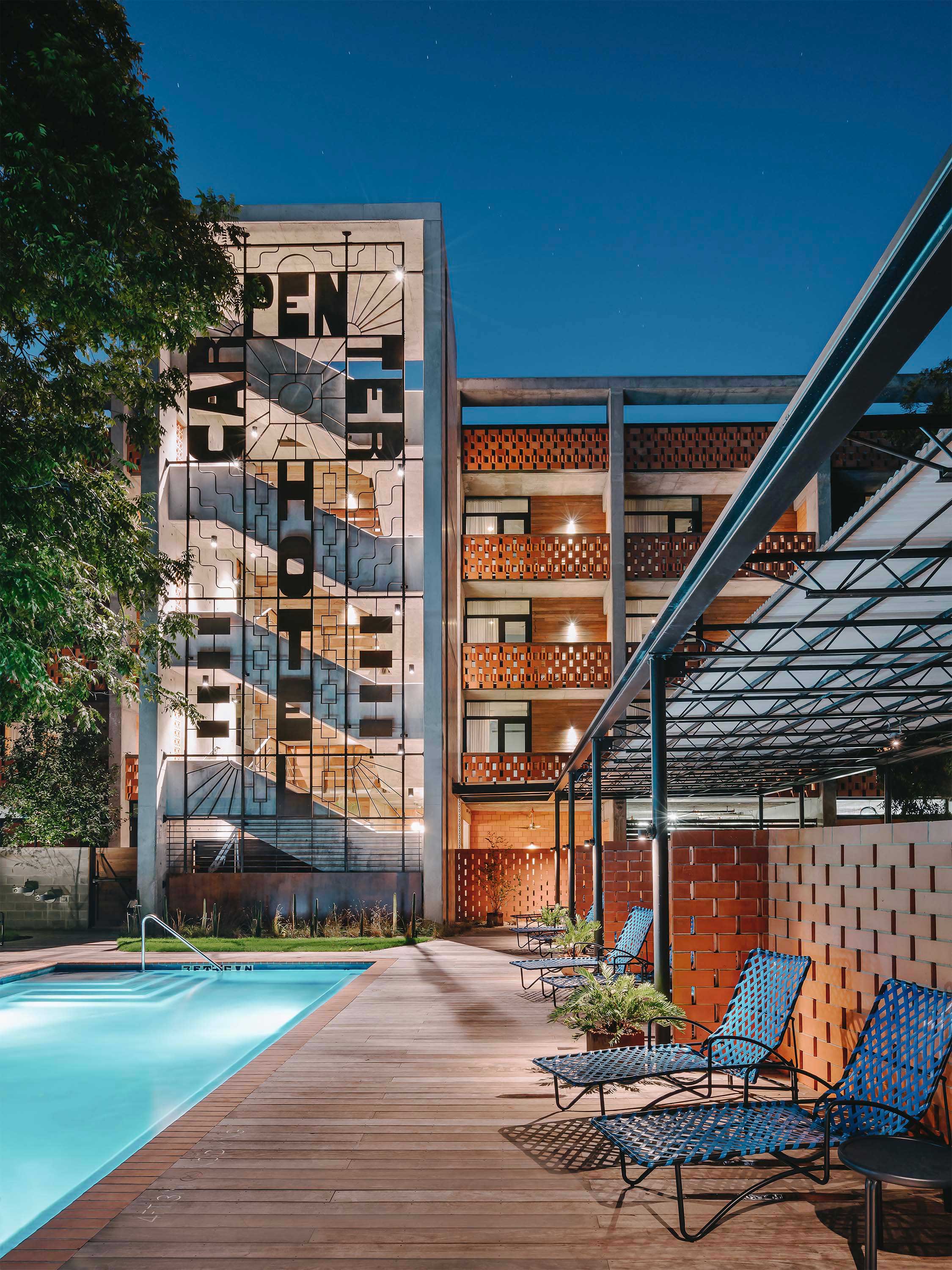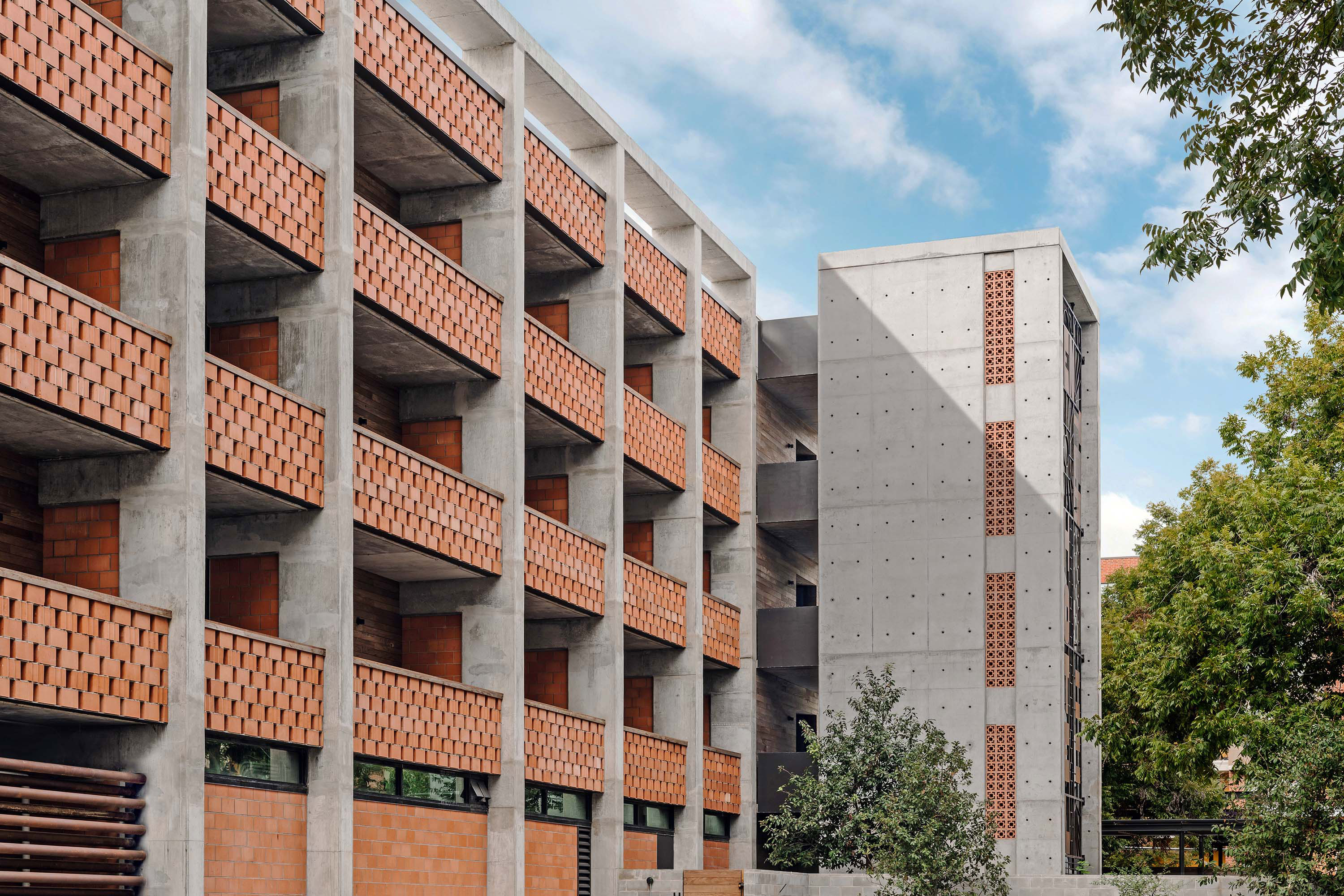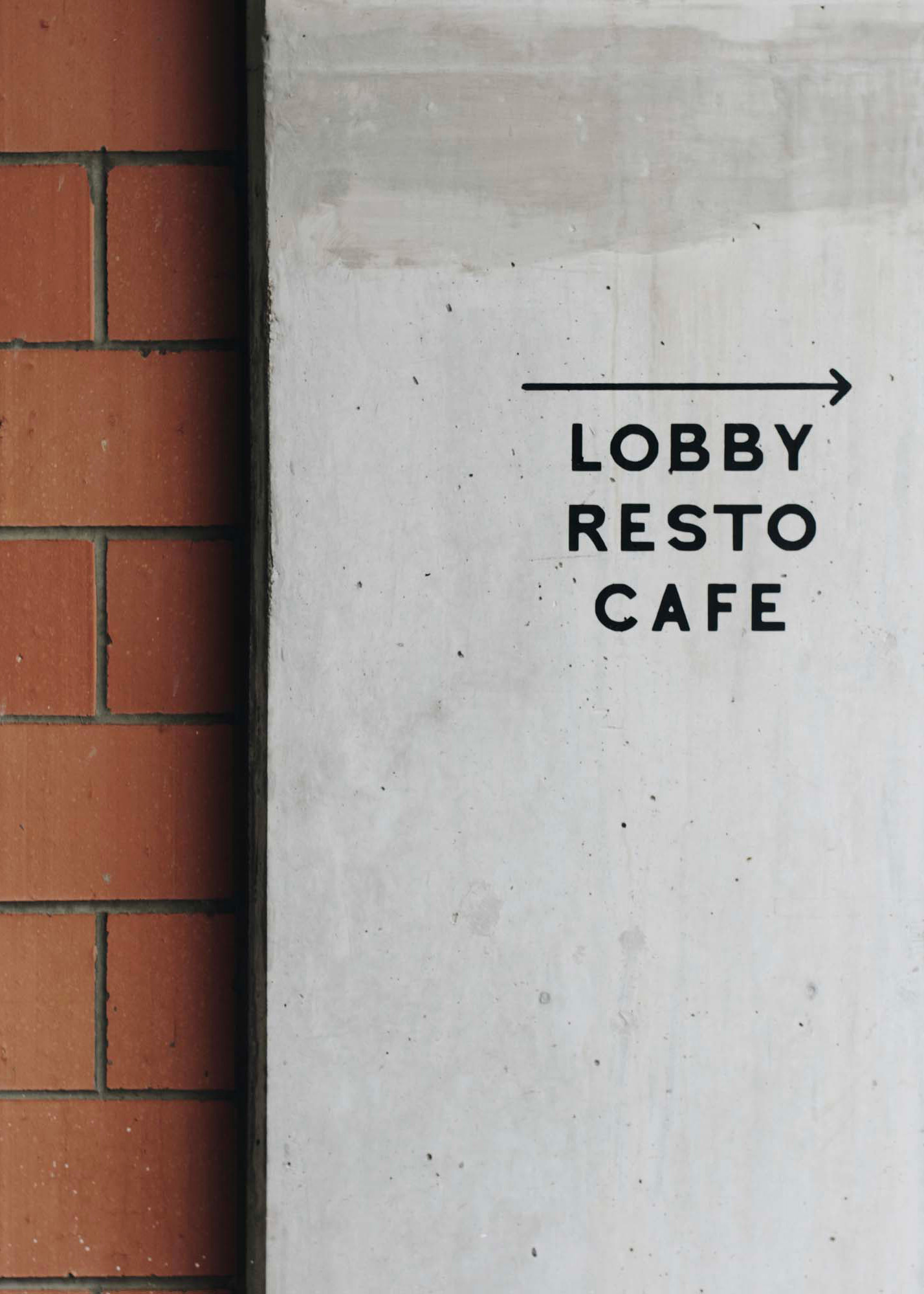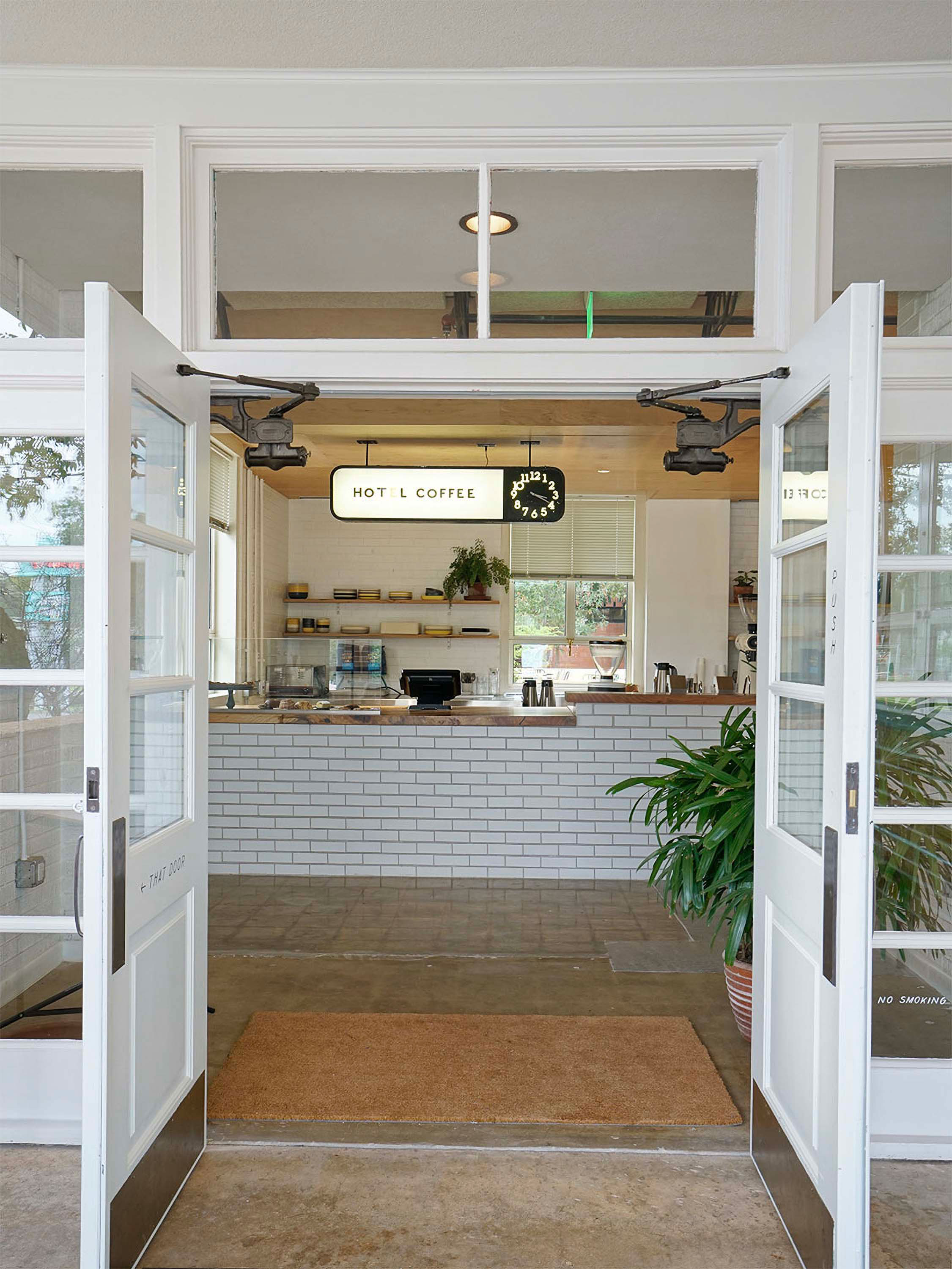In a grove of pecan trees, between the Barton Springs swimming hole and downtown, sits The Carpenter Hotel. A restaurant, café, event pavilion, and 93 guest rooms surround a tree-shaded courtyard and pool.
“It is a new take on the idea of adaptive re-use that doesn’t mimic what was existing, or create a bright line between the “old” and the “new”, but a stealth approach that merges all the parts into an urban collage that feels unforced and authentic.”
– Scott Specht, principal architect, for Forbes
A sense of place drives the design – the desire to create something natural to its location, neighborhood, and the city as a whole. The hotel preserves and incorporates almost all of the original heritage pecan trees growing on the site. Its restaurant and lobby feature pecan wood boards from any fallen or damaged trees. An existing mid-century utilitarian union hall for Carpenter’s Local 1266 is repurposed as the lobby and restaurant. The new hotel building, shade canopies, and Quonset hut-based pavilion have a new and distinct architectural expression. Yet, their forms and materials are harmonious with the existing union hall and local industrial buildings. It’s all a new take on the idea of adaptive re-use that doesn’t mimic what was existing. Instead, it merges all the parts into a collage that feels effortless and authentic.
An exposed rough-concrete frame composes the new hotel building. It’s infill walls are made of locally-sourced clay masonry blocks and recycled steel oil-drilling pipe. All materials are expressed as-is. Spacing and the patterning of basic elements create any decorative effects. There is no attempt to mimic historic styles or follow architectural trends. It is simple and direct, and its power comes from this straightforward expression.





















